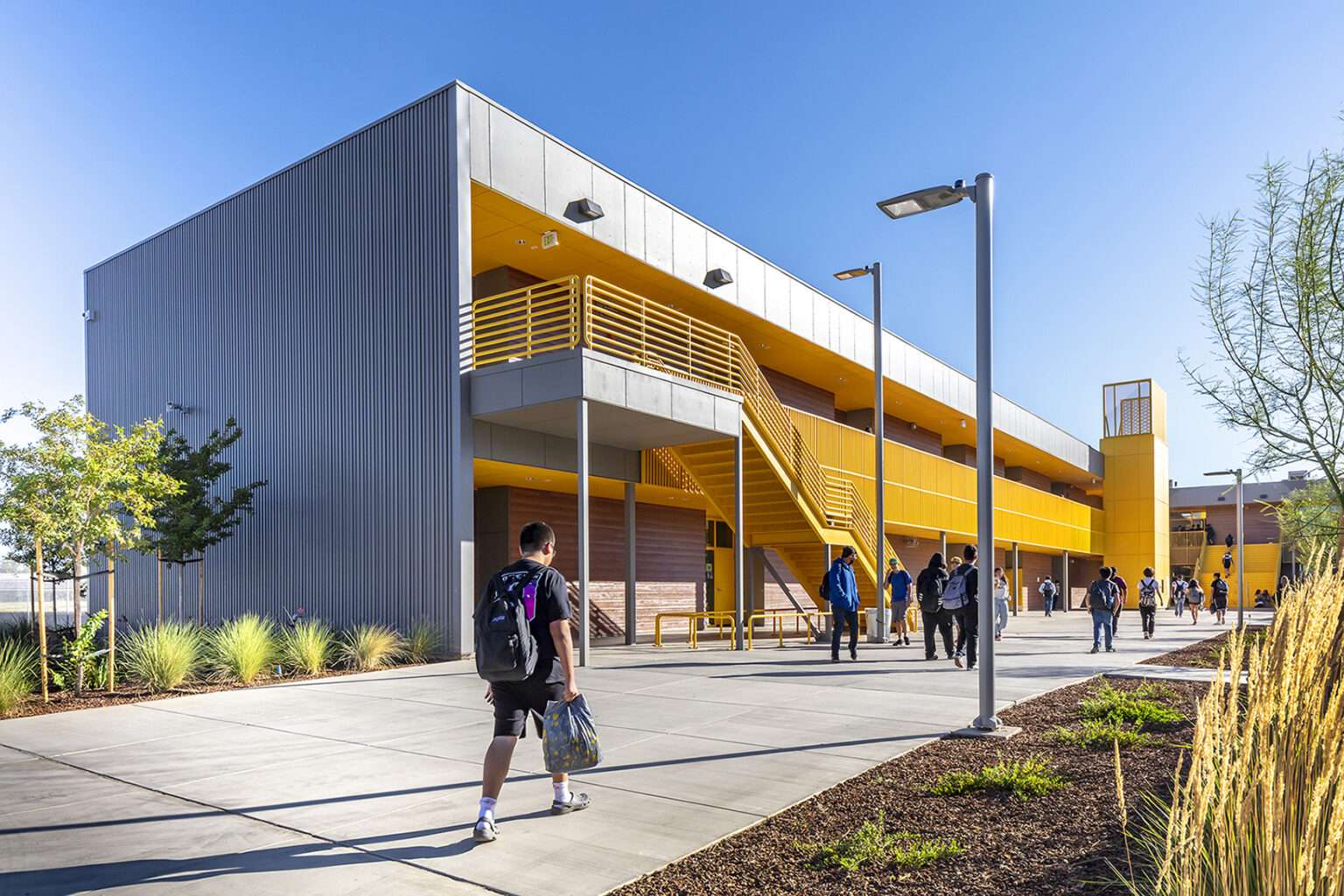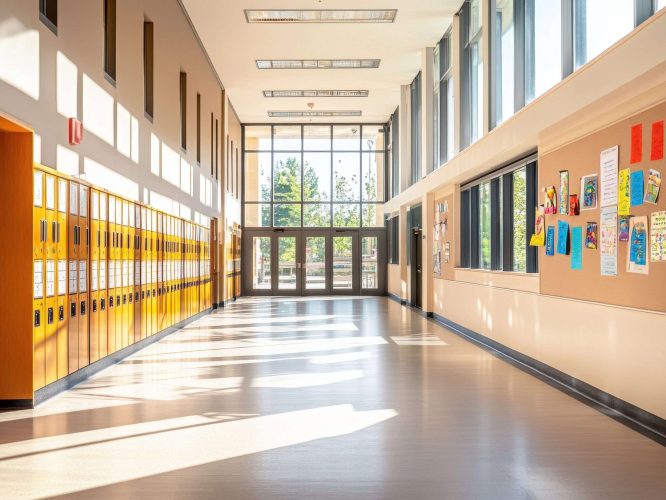Public education buildings require meticulous engineering to meet the highest safety standards. These facilities must withstand environmental stresses, provide long-term durability, and comply with stringent regulatory requirements. Structural engineering companies play a vital role in ensuring that K-12 schools, universities, and other educational facilities remain safe, functional, and resilient. Their expertise extends beyond basic structural principles, incorporating specialized knowledge in seismic safety, fire protection, and accessibility compliance. Given the complexity of these buildings, only highly trained professionals with the appropriate licensing and experience are equipped to handle the challenges that arise during design and construction.
What Makes Engineering Educational Facilities Unique?
Educational buildings differ from conventional structures because they demand a higher level of structural integrity and safety using performance-based design procedures and limiting the conditional probability of failure based on structure risk categorization and applicable assigned Importance Factors. Schools must accommodate large groups of students and faculty daily, making structural reliability a top priority. Unlike office buildings or retail spaces, schools have stricter safety requirements due to their function as centers for learning and community engagement. Additionally, because minors occupy these spaces, the safety measures must account for increased protection in emergency scenarios such as earthquakes, fires, and severe weather conditions.
Only CA state licensed Structural Engineers (SE), who possess specialized certification beyond the standard civil engineering (Professional Engineer – PE) license, are qualified to undertake this type of work. This specialized licensing ensures that professionals working on school structures are trained to implement the latest safety standards and design innovations that contribute to long-term building resilience. In states like California, where seismic activity is a major concern, engineers must design educational facilities that can withstand significant ground movement without compromising the building’s integrity.
One of the primary regulatory bodies overseeing educational facilities in California is the Division of the State Architect (DSA). Schools, particularly in seismic-prone areas, must adhere to strict DSA guidelines. These regulations cover various aspects of construction, including structural reinforcement, fire safety, and accessibility compliance. The process of obtaining approval for an educational building is far more rigorous than for other conventional structures, requiring engineers to provide extensive documentation and undergo multiple rounds of review.
The Challenge of DSA Approval
DSA approval is a notoriously complex and rigorous process, as the agency enforces detailed requirements for structural safety, fire protection, and accessibility. Structural engineering companies working on educational projects must navigate several challenges, including demonstrating compliance with stringent building codes, coordinating with multiple stakeholders, and ensuring that each project meets the highest safety standards.
1. Seismic Safety Compliance
California’s susceptibility to earthquakes necessitates some of the strictest seismic design standards in the country. School buildings must be engineered to withstand seismic activity without compromising structural integrity. This requires advanced structural analysis and reinforcement techniques to ensure the building remains safe during and after an earthquake. Engineers must carefully select materials and structural systems that provide flexibility and strength, preventing catastrophic failures during seismic events. In some cases, damping systems and base isolators are incorporated to mitigate the energy from earthquakes, reducing stress on the structure.
2. Detailed Documentation and Review Process
The DSA approval process involves extensive documentation, including precise calculations, drawings, and specifications that demonstrate full compliance with safety regulations. Structural engineers must undergo multiple rounds of reviews, making adjustments as needed to satisfy all requirements before approval is granted. Each document submitted must provide clear evidence that the design adheres to the latest standards, requiring engineers to work meticulously through every phase of development. The review process often requires engineers to communicate directly with DSA officials, addressing concerns and implementing requested changes promptly to avoid delays.
3. Coordination with Multiple Stakeholders
Educational construction projects involve collaboration between architects, contractors, and multiple engineering disciplines. Any design modification can impact structural plans, necessitating additional DSA reviews. This coordination requires expertise and efficiency to prevent costly project delays. Engineers must work closely with all parties to ensure that design changes do not compromise safety or structural integrity. They also play a crucial role in optimizing project timelines, ensuring that approvals are secured promptly and construction remains on schedule.
What Sets ISE Structural Engineers Apart?
ISE Structural Engineers bring extensive experience and specialized knowledge to educational facility projects. Their expertise in modular design, DSA Pre-Check approvals, and cost-effective construction solutions help streamline the building process for schools and universities. By leveraging innovative design strategies and staying ahead of evolving regulatory requirements, ISE Structural Engineers provide solutions that enhance both safety and efficiency in educational construction projects.
1. Expertise in Offsite Fabrication/Volumetric Modular Design
ISE Structural Engineers have significant expertise in modular construction, which is particularly beneficial for educational facilities. Modular designs have been successfully implemented in school expansion projects, such as North Salinas High School, in collaboration with Brokaw Design and JL Modular. These prefabricated modules are engineered for adaptability, allowing customization based on specific site conditions and project requirements. Modular construction also improves project scalability, enabling schools to expand quickly in response to growing student populations.
Prefabricated units undergo rigorous quality control in a factory setting, reducing on-site construction errors and improving overall building performance. Engineers ensure that these modules meet or exceed DSA standards, incorporating advanced materials and construction techniques to enhance durability. Since modular units receive DSA Pre-Check approval, site-specific approvals are expedited, reducing construction timelines and minimizing administrative hurdles.


Modular construction, like that used in the Tokay and North Salinas projects, is gaining in popularity because it streamlines the approval process offers faster project timelines.
2. Cost-Effective Construction Strategies
Modular engineering offers significant cost and efficiency benefits. Unlike traditional construction, where site work and building fabrication occur sequentially, modular construction allows simultaneous foundation work and off-site prefabrication. This parallel approach enables schools to complete projects more quickly, often within the short summer recess period, minimizing disruption to students and faculty.
Additionally, modular construction can be carried out on operational campuses, ensuring that students can continue their education without relocation or significant interruptions. Engineers design structural components that allow for phased construction, enabling schools to gradually implement new building additions while keeping existing facilities operational. This minimizes downtime and reduces the logistical challenges associated with large-scale school construction projects.
3. Licensed Experts Ensuring Long-Term Safety
Structural engineering companies with specialized licensing and experience in public education projects play a crucial role in maintaining safety standards. Their work ensures that schools not only meet DSA approval requirements but also provide long-term structural integrity and resilience against environmental and operational stresses. Engineers continuously monitor emerging industry trends and regulatory changes, integrating the latest advancements into their designs to improve safety and efficiency.
ISE Structural Engineers remain committed to innovation, exploring cutting-edge materials and construction techniques to enhance the performance of educational buildings. Their proactive approach ensures that schools remain resilient in the face of future challenges, whether it be seismic events, evolving accessibility standards, or changing educational facility requirements.
Conclusion
The engineering of public education buildings requires precision, regulatory expertise, and innovative construction strategies. Structural engineering companies, such as the team at ISE Structural Engineers, play a critical role in ensuring that schools are structurally sound, compliant with DSA regulations, and built efficiently through modular design solutions. Their work not only safeguards students and faculty but also improves construction timelines and cost efficiency, making high-quality educational facilities more accessible.
As demand for modern, safe, and cost-effective school buildings grows, structural engineering companies will continue to be at the forefront of designing resilient, future-ready educational institutions. Their expertise ensures that educational buildings remain durable, functional, and adaptable to meet the evolving needs of students and communities. Through ongoing research, innovation, and adherence to the highest safety standards, these professionals provide the foundation for safe and sustainable learning environments for generations to come.



